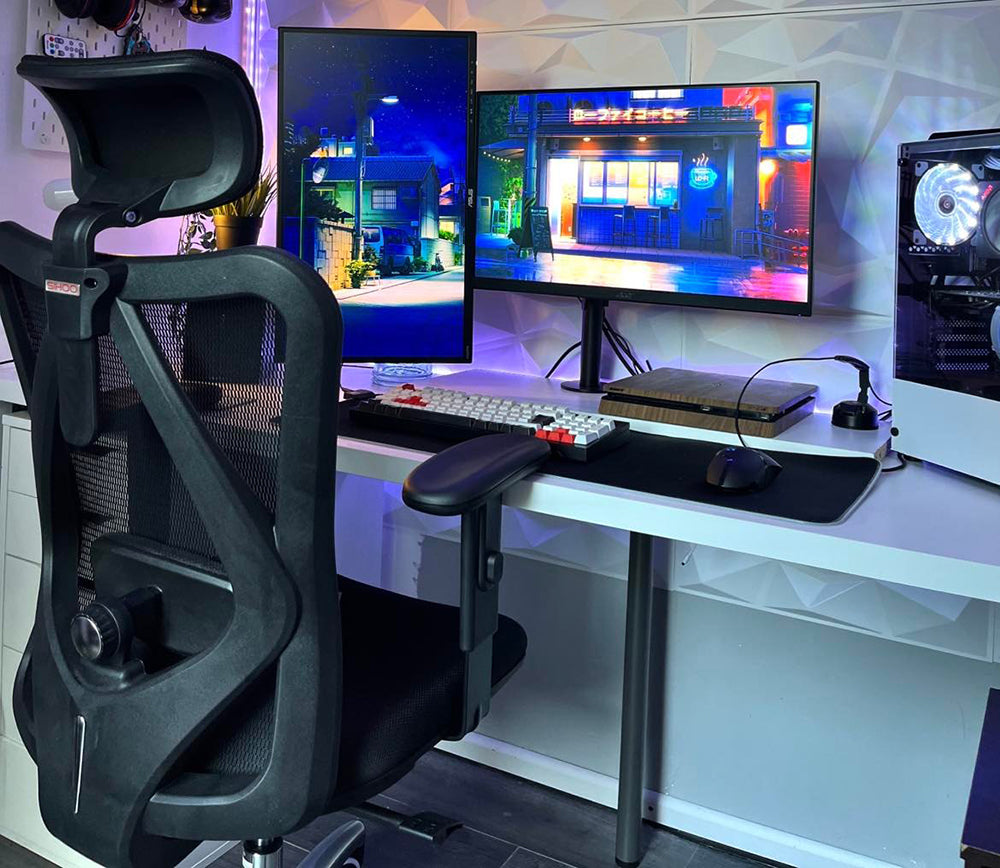Gaming has become an increasingly popular pastime, with millions of enthusiasts spending hours immersed in virtual worlds. As gaming gains momentum, so does the interest in optimizing the gaming experience, leading to the rise of gaming chairs. These chairs are designed to provide comfort, support, and enhance the overall gaming performance. However, there has been a debate regarding their impact on back health. In this article, we will delve into the subject and explore whether gaming chairs are genuinely good for your back.
Understanding Gaming Chairs
Gaming chairs are ergonomically designed seats specifically tailored to accommodate gamers during their extensive gaming sessions. They often feature various adjustable components such as lumbar support pillows, headrests, reclining mechanisms, and armrests, all aimed at maximizing comfort and reducing fatigue. Many gaming chairs also come with a bucket-seat design, reminiscent of racing car seats, which adds to their aesthetic appeal.
Ergonomics and Back Support
One of the primary selling points of gaming chairs is their emphasis on ergonomics. Ergonomics focuses on designing products that optimize human well-being and efficiency in the working or gaming environment. The chairs are intended to provide proper support to the natural curvature of the spine, particularly in the lumbar (lower) region.
Gaming chairs often come equipped with adjustable lumbar support pillows that can be positioned to align with the lower back's natural curve. This feature helps maintain the correct posture and reduces the strain on the lumbar spine during long gaming sessions. By providing adequate lumbar support, gaming chairs can potentially alleviate back pain and promote better spinal alignment.

Enhanced Comfort and Reduced Fatigue
Extended gaming sessions can lead to discomfort, fatigue, and postural issues if not properly addressed. Gaming chairs are specifically designed to tackle these concerns by offering enhanced comfort. They typically have ample padding and cushioning, allowing gamers to sit for longer periods without feeling uncomfortable or developing pressure points.
Furthermore, the adjustable features of gaming chairs, such as the ability to recline or adjust the armrests, enable users to find the optimal position that suits their body type and personal preferences. This customization helps reduce strain on the back and neck muscles, ultimately minimizing the risk of developing musculoskeletal issues associated with prolonged sitting.
Potential Drawbacks and Individual Factors
While gaming chairs have numerous benefits, it is important to consider individual factors and potential drawbacks. The suitability of a gaming chair may vary depending on a person's body type, height, and pre-existing back conditions. What works for one person may not necessarily work for another.
Some critics argue that the bucket-seat design of gaming chairs can lead to a slouched posture, particularly if the user doesn't actively engage in maintaining proper alignment. Slouching or sitting in an incorrect posture can lead to increased pressure on the spine, potentially exacerbating existing back issues.
Moreover, it's crucial to remember that sitting for prolonged periods, regardless of the chair used, can be detrimental to back health. Taking regular breaks, incorporating stretching exercises, and maintaining overall physical activity are vital components in mitigating the negative effects of prolonged sitting.
Conclusion
Gaming chairs, with their ergonomic design and emphasis on back support, can provide significant benefits for gamers by promoting better posture, reducing discomfort, and minimizing fatigue. The adjustable features and customization options make them appealing to many gaming enthusiasts. However, it's essential to consider individual factors, maintain proper posture, and avoid prolonged sitting.
While gaming chairs can be a valuable addition to a gamer's setup, they should not be seen as a magic solution for all back-related issues. Maintaining a healthy lifestyle, incorporating physical activity, and taking regular breaks from extended gaming sessions are crucial for overall well-being. As with any product, it is advisable to try out different gaming chairs and find one that suits your body type and preferences. Consulting with a healthcare professional, such as a physical therapist or chiropractor, can also provide valuable insights and recommendations tailored to your specific needs.
Ultimately, the question of whether gaming chairs are good for your back depends on how they are used and the individual using them. When used correctly and in conjunction with healthy habits, gaming chairs can contribute to better back support and overall comfort during gaming sessions.
However, it's important to remember that no chair can replace the benefits of regular movement and exercise. Incorporating stretching exercises, taking breaks to move around, and maintaining a balanced lifestyle are crucial for mitigating the risks associated with prolonged sitting.
In conclusion, gaming chairs can offer several advantages for back health, including ergonomic design, lumbar support, and enhanced comfort. They can provide a more supportive and comfortable gaming experience, particularly during long gaming sessions. Nevertheless, they are not a panacea for back problems and should be used in conjunction with proper posture, regular breaks, and overall healthy habits. Prioritizing your well-being and finding the right balance between gaming and physical activity will ensure a more enjoyable and sustainable gaming experience in the long run.



